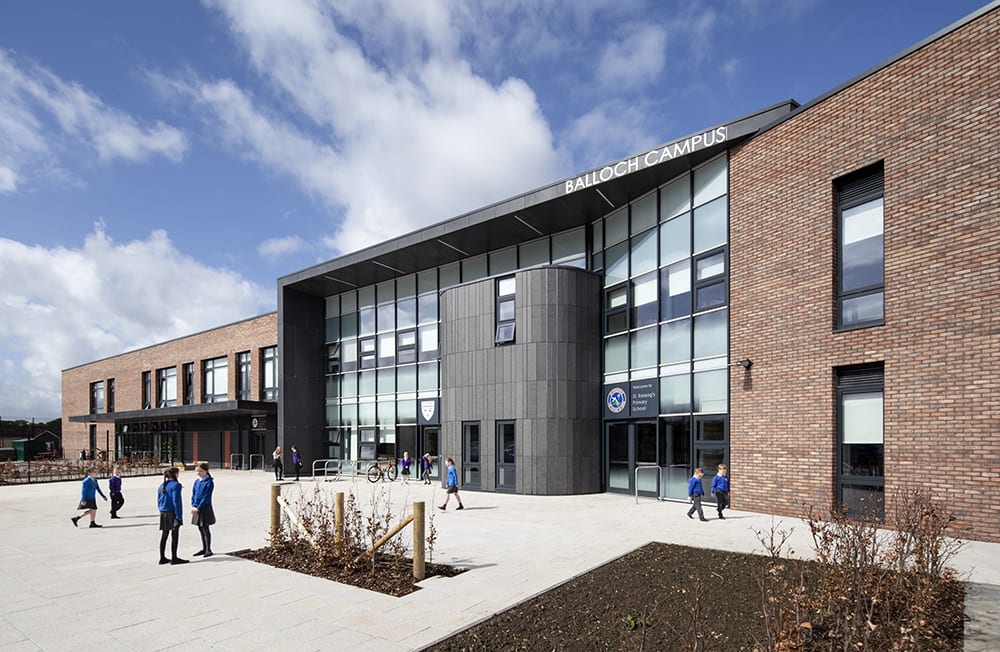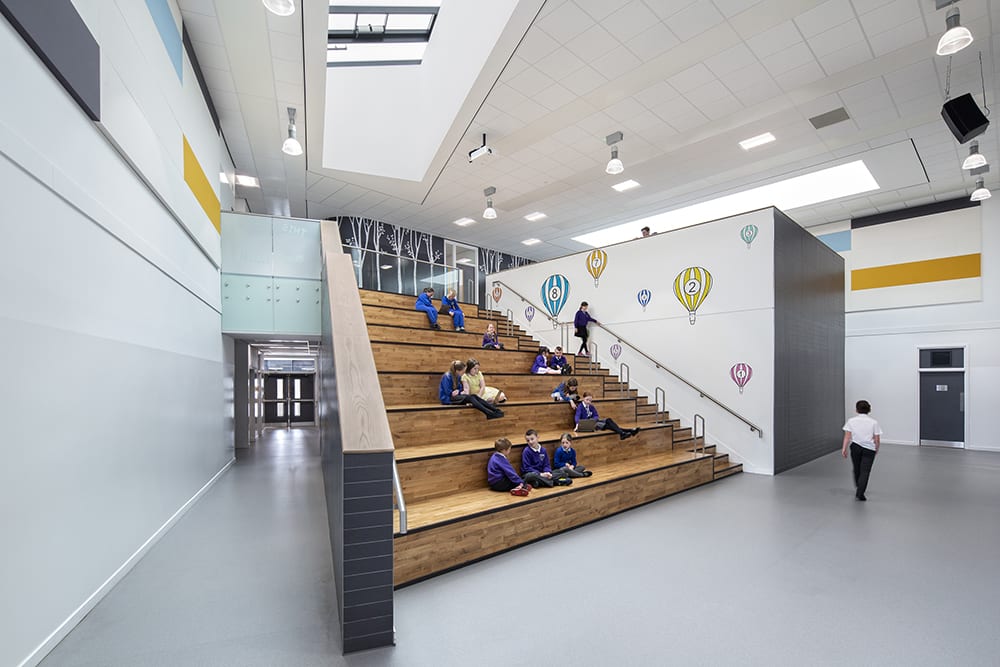The new Balloch Shared Campus in West Dunbartonshire brings three primary schools, an early learning centre and an Additional Support Needs (ASN) base together under one roof. Integration is at the very heart of the project – its flexible, open plan spaces provide more than 700 pupils with an educational environment designed to encourage collaboration and learning.
This collaborative ethos was replicated in the design and build process. This is where BIM came to the fore, bringing the multi-disciplinary elements together into a single, cohesive design.
With working in a 3D BIM environment now commonplace, the role of the BIM information manager becomes the lynchpin, keeping all of the design disciplines and subcontractors working to the same standards and objectives, as set out by the project’s BIM Execution Plan (BEP). In the example of Balloch Shared Campus, this responsibility was awarded to multi-disciplinary design and engineering company, BakerHicks.
One team, one goal
The ambitions and parameters for the use of BIM on the project were set out early through the post-contract BEP. BakerHicks worked closely with contractor, Morgan Sindall Construction, the wider design team and the client team to produce the BEP and associated asset delivery plan, and create achievable objectives.
The software and versions, file exchange formats and frequency, file and asset naming requirements, and system of classification specified were all outlined, along with how the models were to be used for costing and asset requirements. This ensured a delivery plan that enabled the multi-disciplinary team to work as one.
The BIM information manager ensures the design team understand the BIM objectives and how they are to be met. BakerHicks’ specialists provided extensive training and support on software, process and workflows for all design team members throughout the project. They held meetings to go through the data requirement in detail and made guidance documents available to the whole team to review.

Balloch Shared Campus is an example of how the BIM information manager role adds real value to the design and build process
Further one-to-one meetings were held with those subcontractors who were new to delivering COBie data. In addition to this, experts were on hand throughout the process to help with any issue that arose concerning the BIM documentation.
This level of support provided by BakerHicks meant that all designers engaged in the project were able to comply with every objective and standard set out in the BEP. Furthermore, this ensured the delivery of asset data that can be used in the management and maintenance of the campus throughout its lifecycle.
Problem solving
With multiple design packages from separate subcontractors being integrated to form the final design, BakerHicks’ experts carried out regular audits of the model to manage any potential issues or clashes. This could be anything from a light switch being placed too close to a door, to a more significant issue such as a cross bracing running in front of a fire exit.
In the case of Balloch Shared Campus, identifying these snags early helped reduce errors in procurement and construction, bringing cost savings through eliminating the need for remedial works.
When any updated model was input into the federated central model, BakerHicks undertook a quality assurance review (QAR) to identify any potential issues and ensure each model was fully compliant with the BEP, master information delivery plan (MIDP) and asset information delivery plan (AIDP) requirements.
This review ensured all data within the model was accurate, with all naming conventions followed. It also ensured that all the files were workable, with the revision and suitability information correct, and the geometry modelled to the level of detail required. This allowed Morgan Sindall Construction to be confident that the final model was accurate and ready to be handed over to the end client.

BakerHicks also went a step further than the service usually provided by the BIM information manager, providing 360-degree renders for client meetings. These could either be viewed in a web browser, using the mouse to move around the space, or by using a simple cardboard virtual reality (VR) headset powered by a smartphone to immerse the viewer.
The 360-degree renders enabled the client to easily understand the spaces and how they would work, as well as assisting with their decision making process. Lesley Woolfries, project manager for West Dunbartonshire Council, recognised the importance of this collaborative technology, saying: “Visibility of the process is worth its weight in gold. Seeing the output in 2D CAD drawings is often hard for clients, in BIM you can sit down and give them peace of mind.”
Digital data across the lifecycle
The BIM information manager role is about ensuring accurate, consistent and useful asset data, the value of which goes beyond the construction period. For Balloch Shared Campus, BakerHicks worked with digital operation and maintenance (O&M) company, E-Documents, to import this data from the model into an online database. This enables authorised users to easily access all COBie and O&M data, providing the ability to click straight through to the precise location of each asset within the federated model.
The digital asset-rich model, building user guide, O&M manuals, compliance certification, as-built drawings and training videos are all hosted and linked within this web-based system. This allows the client’s facilities management team to search the system by product, location or key word to find information on the agreed assets within the facility.
Any changes made throughout the Campus’s lifecycle can be updated within the database, so the user can be sure the data is accurate. This streamlines the O&M process, providing the client with guaranteed data consistency.
Bringing it all together
Balloch Shared Campus is a prime example of how the BIM information manager role adds real value to the design and build process. Having a team of BIM experts to support, manage and check the delivery of the model and its associated asset data ensured the model was accurate and the data had meaning and purpose.
This not only helped ensure the wider design team were working as one, but it delivered asset data that can be leveraged to deliver tangible, ongoing benefits.















